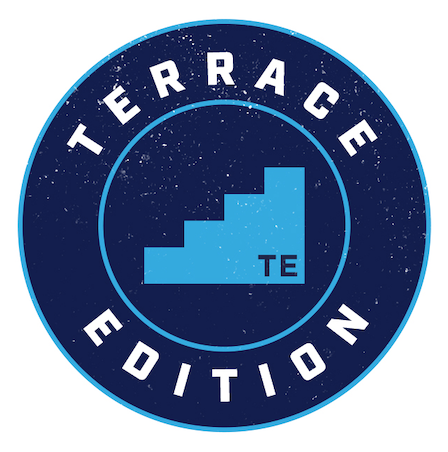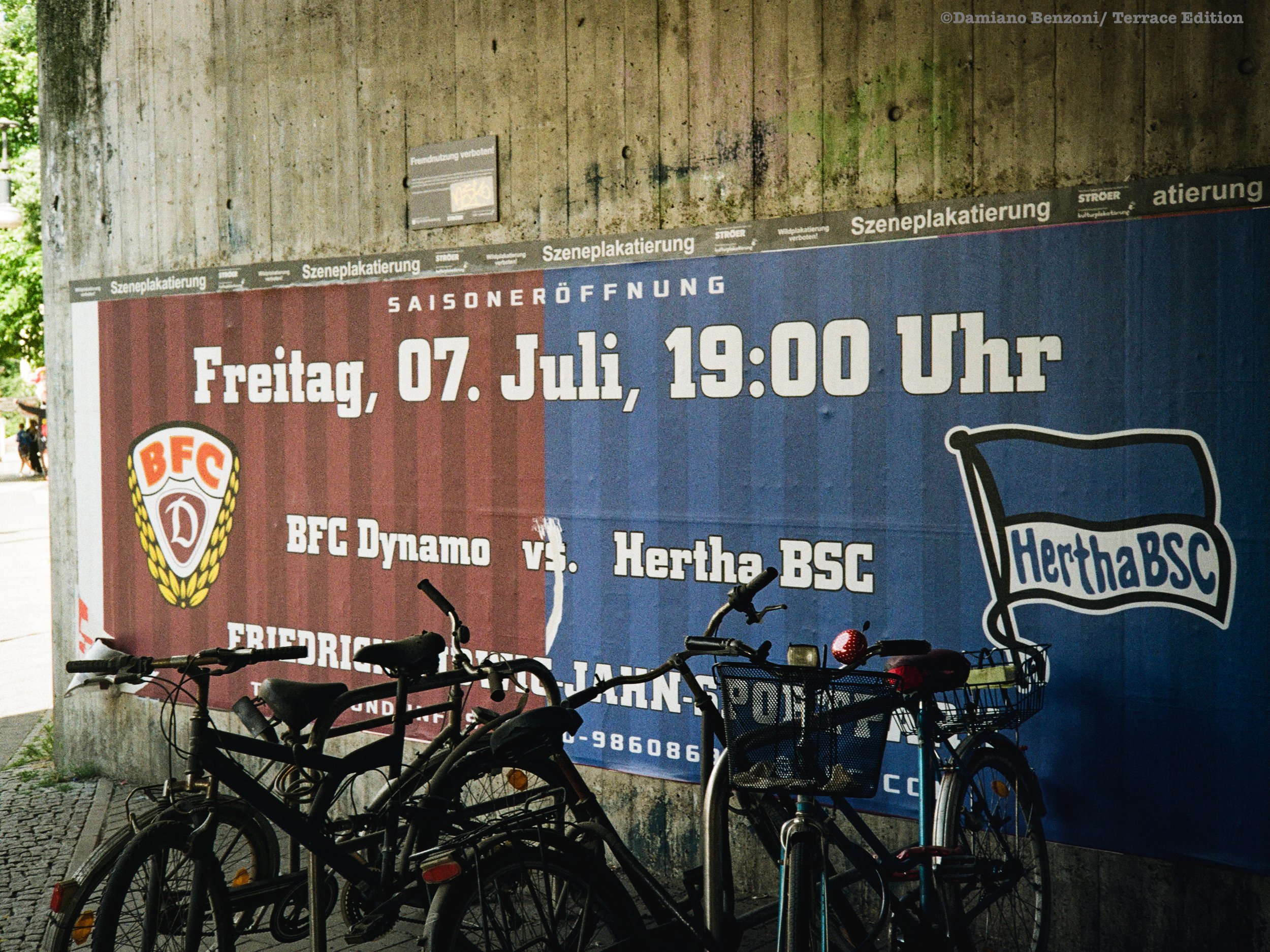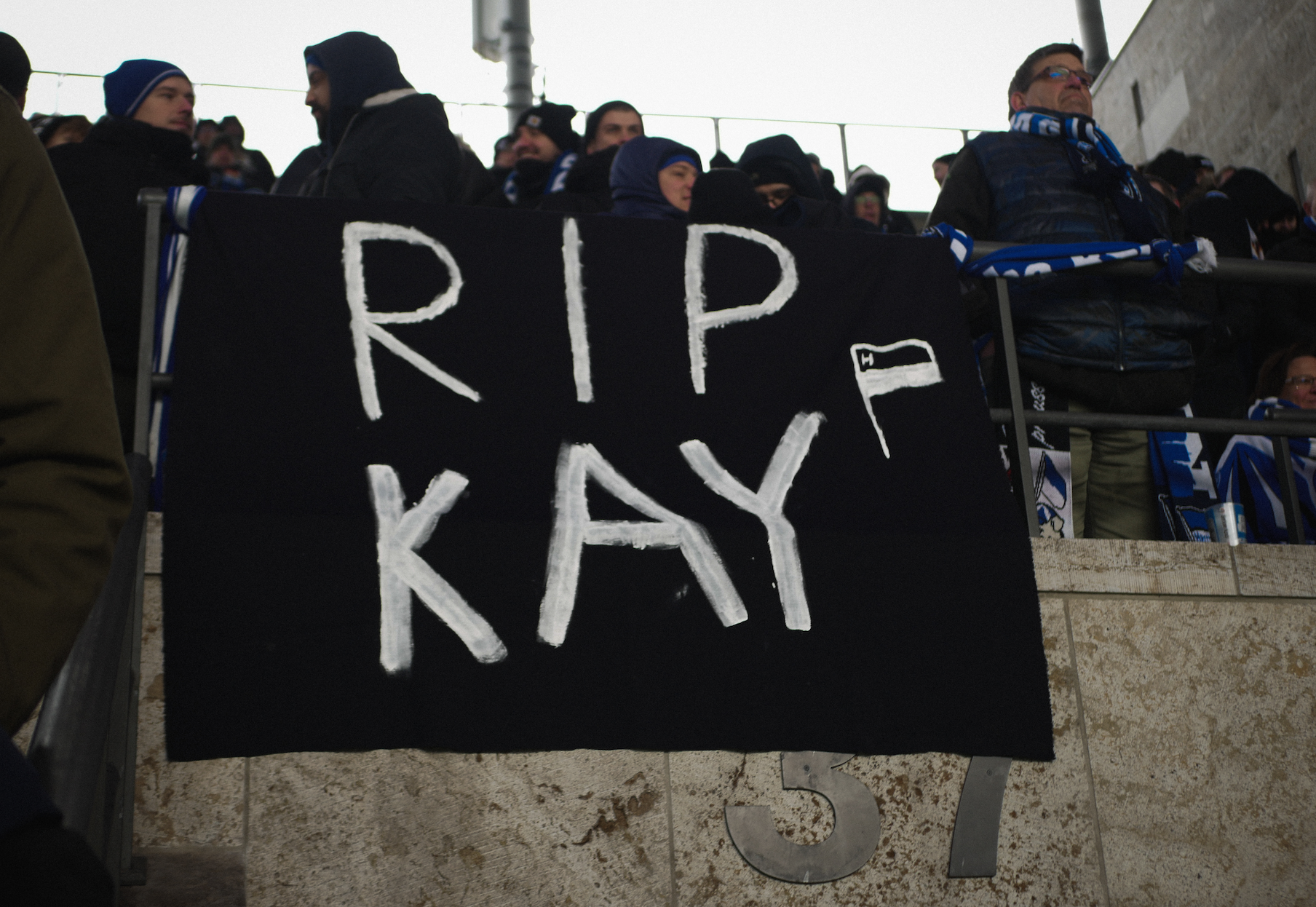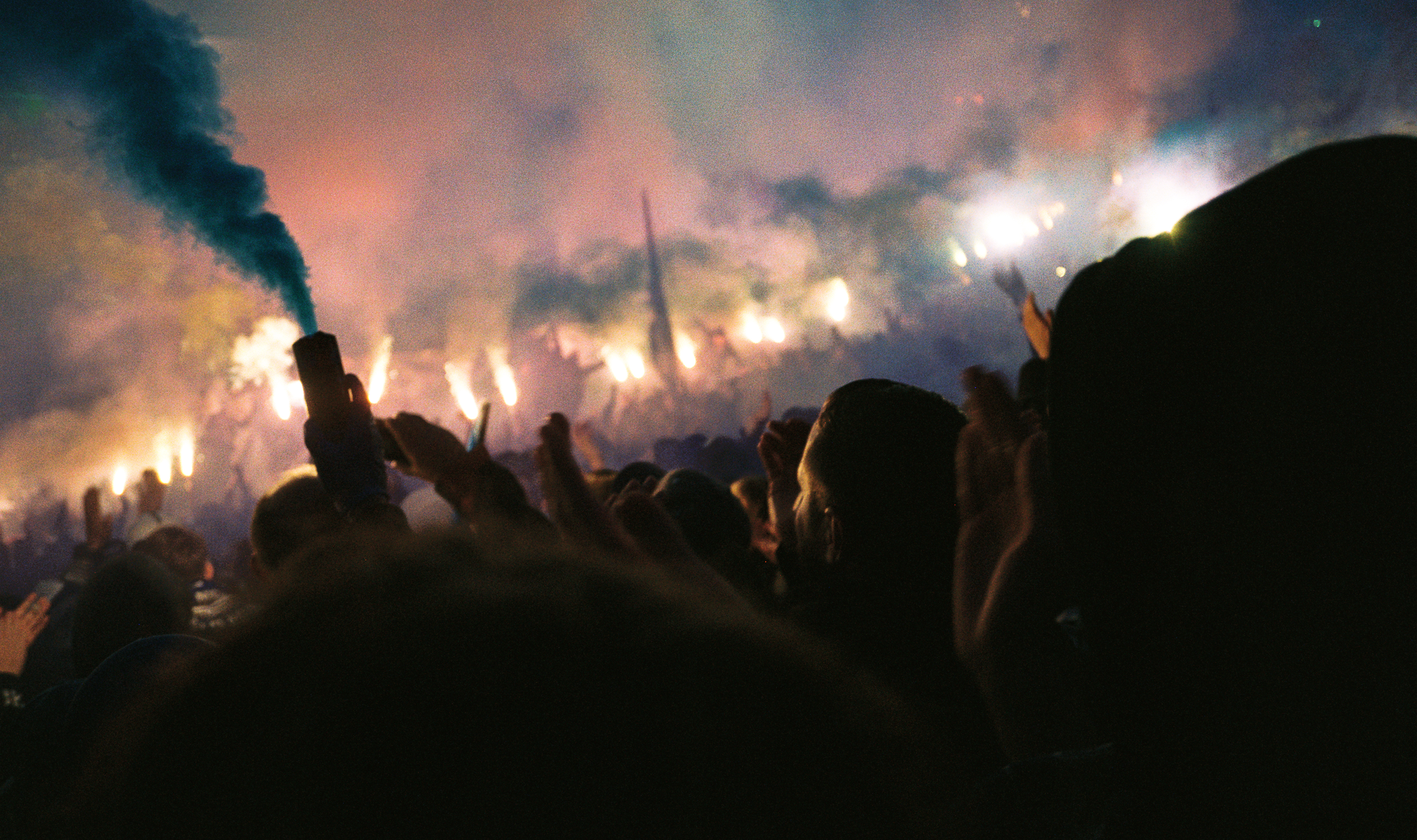The derby that never was

Words: Damiano Benzoni
Images: Damiano Benzoni
It was the kick-off to the entire Berlin football season. The expectation had been set by the multitude of blue and burgundy posters plastered on the walls of the German capital, announcing the friendly match between BFC Dynamo and Hertha at the Friedrich-Ludwig-Jahn-Sportpark. And the turnout didn’t disappoint, with more than ten thousand people attending what, on the pitch, was a rather dull summer preparation game, won by Hertha with two second-half goals.
Spätis, kebab stalls and trams were packed and someone not versed in the history of the game in Berlin could have mistaken this for the latest rendition of an established local derby.
Instead, it is a match that has never been played as a competitive fixture.
For decades Hertha and Dynamo were the two biggest teams in Berlin, but never crossed paths, as they represented two different sides of a divided city with the wall standing.
BFC Dynamo, with its dubious stint of ten back-to-back GDR Oberliga titles, was the quintessential East German club. It was the team of the Interior Ministry of the GDR, which meant their story is closely associated with the Stasi and the sinister name of Erich Mielke, founder and director of the infamous political police and honorary president of the club.
On the other side of the wall, instead, Hertha would become West Berlin’s stable representative in the Bundesliga. For political reasons it was officially stipulated that the western section of the city, completely surrounded by East Germany, would always have at least one team in the top tier. And that spot was almost always occupied by Hertha.
©Damiano Benzoni/ Terrace Edition. BFC Dynamo v Hertha BSC.
After reunification, the two clubs never got to meet in a competitive game: Dynamo’s poor performance in the last GDR season - the Ministry’s support by then vanished - meant they would be forced to restart in the third division in the 1991-92 season. They were relegated in 2000, never to resurface again, and only managed to play against the second team of Hertha. In the first Bundesliga after reunification, Berlin had no representative: Hertha had just been relegated and the German capital had to endure six seasons without top tier football before the Alte Dame managed to get back to the Bundesliga. They would be relegated twice again, both times immediately managing to get back up.
The setting did much to add to the atmosphere of the friendly, as the Friedrich-Ludwig-Jahn-Sportpark, theatre of the glorious European nights of Dynamo in the Eighties, lies right where one of the most heated sections of the Berlin Wall used to run. It was probably the last big occasion for its outdated charm - sadly disrupted by the presence of American football goals. Dynamo doesn’t play there anymore and the stadium can seldom boast huge attendances despite its capacity of 20,000. But most importantly, it will undergo extensive renovation in 2024.
It will be a crucial season for both teams: Hertha has just been relegated once again, while Dynamo’s hopes are high. This year the complicated promotion system of the 4th division grants the winner of the North-Western group a direct promotion slot and the former Stasimen are among the favourites for a pass to the 3. Liga.
If anyone could make a word cloud from all the chants of the fans at the Jahn Sportpark, the two most prominent words would be Scheiß Union. Even though the two teams had no shared tradition, they immediately found common ground by chanting call-and-response insults against Union Berlin. A team mostly identifying with the district of Köpenick, rather than with the whole city of Berlin, Union are now the only representative of the Capital in the Bundesliga, being thrust to Champions League qualification only four years after gaining promotion to the top tier for the first ever time. They shared a long lived rivalry with Dynamo in GDR times, due to their anti-establishment stance, while their Bundesliga promotion meant that finally Hertha could have their first Bundesliga derby rival since 1977.
Berlin remains condemned: not “forever to becoming and never to being”, as a minor German author put it. But rather to have countless different souls in football and rarely to be able to see them face each other on the field at the highest footballing levels. Maybe that is why even a friendly derby can become such an event.
Images shot on Canon EOS 650 (35 mm) and Canon A35F (35 mm).
©Damiano Benzoni/ Terrace Edition. BFC Dynamo v Hertha BSC.
©Damiano Benzoni/ Terrace Edition. BFC Dynamo v Hertha BSC.
©Damiano Benzoni/ Terrace Edition. BFC Dynamo v Hertha BSC.
©Damiano Benzoni/ Terrace Edition. BFC Dynamo v Hertha BSC.
©Damiano Benzoni/ Terrace Edition. BFC Dynamo v Hertha BSC.
©Damiano Benzoni/ Terrace Edition. BFC Dynamo v Hertha BSC.
©Damiano Benzoni/ Terrace Edition. BFC Dynamo v Hertha BSC.
You can find Damiano on Twitter and Instagram: @dinamobabel













